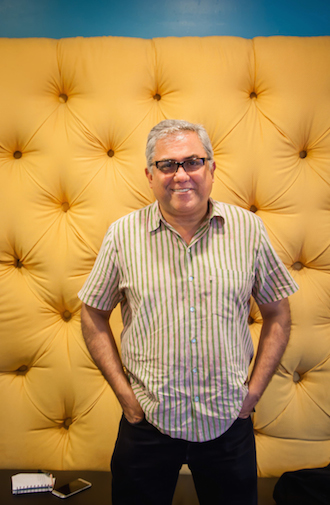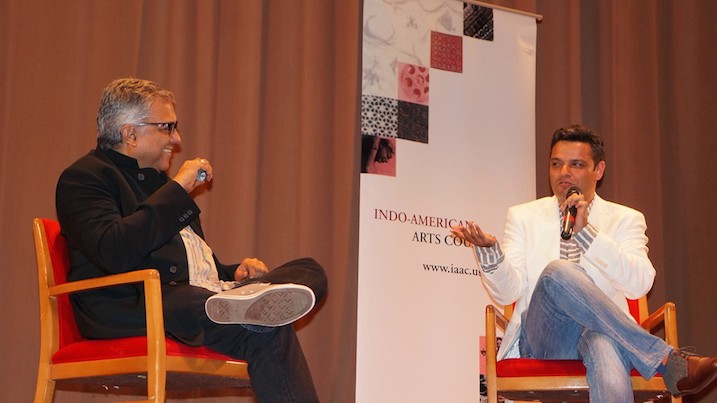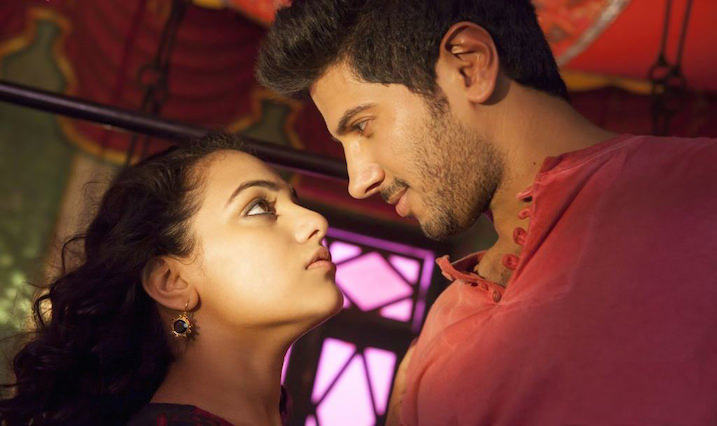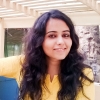In the hope of creating a better understanding of India’s culture and its people, the New York Indian Film Festival took shape in November 2001 (as the Indo American Arts Council Film Festival). Arriving on the heels of the September 11 attacks, and the burgeoning paranoia of brown skin that had naturally followed, it shouldered a responsibility that went beyond entertainment.
Today, NYIFF has grown into one of the foremost South Asian film festivals, screening independent and arthouse films from the Indian subcontinent and showcasing the work of both promising new artists and highly acclaimed filmmakers. We caught up with the festival’s director –noted film writer and critic, Aseem Chhabra between his jam-packed schedule at Village East Cinema, New York.

What a great line-up for NYIFF 2015. Tell us a little about the festival’s programming process.
The main programme is a combination of films, selected from the submissions and other interesting work that is out there. I attend various film festivals as a journalist, where I also look for these films. I go to Berlin, Toronto and last year I went to IFFI Goa, Mumbai film festival, and the Dharamsala film festival (DIFF) as well. We keep an eye out for what is being shown at Cannes or Venice. That is one part of it. Secondly, what we consciously do at NYIFF is that, every year we have a special ‘sidebar’ –a retrospective focusing on one filmmaker or one kind of cinema. Last year we did a sidebar of Gurinder Chadha’s films, where we showed ‘Bhaji on the Beach’, ‘It’s a Wonderful Afterlife’, and a collection of her shorts. This year, we consciously did a sidebar of Vishal Bhardwaj because Haider just released last year, and it’s fresh in people’s memory. A lot of people have already seen it but we practically had a full house here. And Maqbool and Omkara have not been shown in theaters for a while. Vishal told me that this is the first time these 3 films are being shown together. Every year, we come up with something on par with such programmes. Two years ago, we showed 3 classics that had been restored, to commemorate 100 years of Indian cinema.
Have you thought about introducing audience voting and audience choice awards, like other film festivals such as IFFLA?
The reality is that currently the festival runs because we have some very committed volunteers. Things can be running very smoothly one minute and then they can go wrong the next, causing a lot of frustration. I have a lot of respect for IFFLA and I know the people who run it. They screen between 10-15 films, while we are showing twice that number. We have 30 features and 20 short films this year. So just in terms of the logistics of bringing the filmmakers here and financially running the festival, things have to be managed on a much larger scale. Adding another level to it (through audience voting), would complicate it further. Having said that, I would love to have an audience award here as well, like most other festivals do.

“Today, social media and the internet in general has allowed everyone to become a film critic.”
As a film critic, do you look for specific elements in a film which impress you the most? Or is it just how you feel about it in the moment?
It’s how I feel about it. At the end of the day, it’s all subjective. Today, social media and the internet in general has allowed everyone to become a film critic. You see so many people posting reviews, and there are blogs all over the place. However, we still have some very good film critics in India. The fact that I’m a freelancer makes it harder for me because most publications have their own dedicated staff who review films. Plus there is the time zone difference. So it’s more valuable for me to do featured articles like interviews of filmmakers or actors. To answer your question, you know, there isn’t one special thing that one looks for in a film. It has to be a complete experience. You have to connect to the story, you have to connect to the whole visual experience of cinema. If it was just for the story, then I could read a novel or a book or I could even go see a play. But cinema has to add different layers to it. It has to be a complete package. There have been times when I’ve liked a film which wasn’t going great story-wise. Just yesterday I saw Mani Ratnam’s O Kadhal Kanmani. I loved it. It was charming, delightful, visually beautiful and it made me smile. It had two great young actors who were so fresh and had great chemistry between them. It was the most romantic thing I’ve seen in a while. But, it had a flimsy story. There weren’t too many dramatic turns. So as a movie going experience, it is fantastic and I would highly recommend it to everybody. Would I give it a five star rating? No. I’ll give it a 3 or 3.5 because I had a great time watching it, while I can still say –I wish the story had been stronger, I wish there’d been some more conflict, and that the resolution of the conflict was done in a more serious manner.
“There isn’t one special thing that one looks for in a film. It has to be a complete experience. You have to connect to the story, you have to connect to the whole visual experience of cinema. If it was just for the story, then I could read a novel.”

You meet a lot of filmmakers in your role as a film festival director. Surely you have reviewed their films in the past. Does that make it tricky, once you know them personally?
Yeah, sometimes. I have reviewed Vishal Bhardwaj’s films and I don’t know if he remembers what I’ve written, but I did end up reviewing a few of his films in the past, which I didn’t rate highly. It does make it hard because I’m playing two roles. I cannot be a journalist here at this festival.
What is your vision for NYIFF? What do you want to see in its near future?
More than anything, I wish that we can run the festival more smoothly. There are all sorts of hiccups we have to face everyday, which most festival attendees don’t know about. For example, we were running into some problems today with one of the screenings. But it appears very smooth on the outside and people don’t know what’s happening behind the scenes. We go through a lot of mental stress. Financially, it’s a big struggle because the festival is run by a not-for-profit organization (Indo American Arts Council).
Does that mean that you have to raise funds every year?
Oh yes, every year we go through a funding process. Some of it comes in the form of donations. Some of it is sponsorship from airlines and hotels and some are discounts. So every year, we have to go through this big financial struggle, which is the hardest part. I wish that could become smoother.
The 15th annual NYIFF was held between May 4-9, 2015. Aseem Chhabra is a freelance writer in New York City writing on a variety of topics, including arts, entertainment, social and political issues. He has been published in The New York Times, The Boston Globe, The Philadelphia Inquirer and The Courier-Journal, Time Out, New York. He writes a weekly column for Mumbai Mirror and also contributes to India Abroad and Rediff.com















